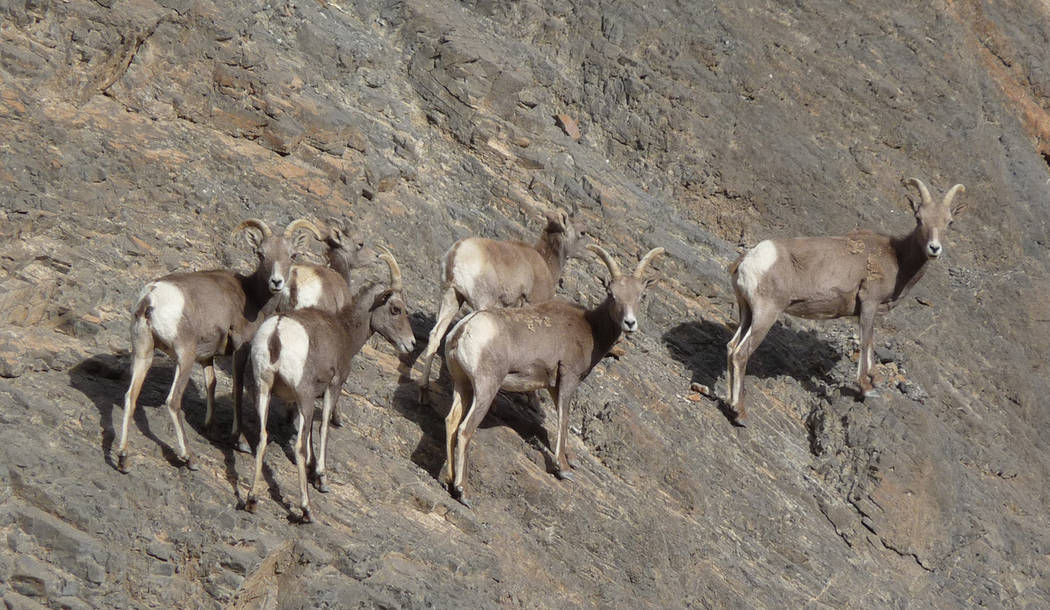
National Park Service biologists have questions about desert bighorn sheep in Death Valley National Park:
How many sheep are there? How healthy are they? How can they best be protected? Research and monitoring going on now should help provide answers.
The park provided a news release detailing the issue.
Desert bighorn sheep (Ovis canadensis nelsoni) range throughout the park, from salt flats to mountain ridges.
Bighorn spend most of their time on steep slopes where they feel safe from their primary predator, mountain lions.
The National Park Service is working with the California Department of Fish and Wildlife to monitor bighorn in Death Valley. Twenty-one sheep have been fitted with collars that transmit their location every hour via satellite.
In a separate effort, Oregon State University researchers, Dr. Christina Aiello and Dr. Clint Epps, are studying bighorn distribution in and around Death Valley National Park, Mojave National Preserve, and Joshua Tree National Park. Karen Swett Conway and Brian Conway donated grant funding for this landscape-level study via the Conway Science Fellowship.
Dr. Aiello explained, “The location and health of bighorn herds as well as how they interact with each other across the Mojave Desert can change in response to environmental conditions and human activities that alter their habitat. This study will help us better understand where bighorn populations currently occur and how connected they are across this large landscape given the modern challenges of habitat fragmentation and climate change.”
Disease, non-native burros, climate change, gene pool isolation and vehicles are all risks to bighorn sheep.
A ram was killed by a vehicle on California Highway 178 near the junction with Greenwater Valley Road on Oct. 27.
Three other bighorn sheep have been killed by cars in the park in recent years. Park staff are also concerned about a young female bighorn that has been licking antifreeze from the Dantes View parking lot and approaching cars.